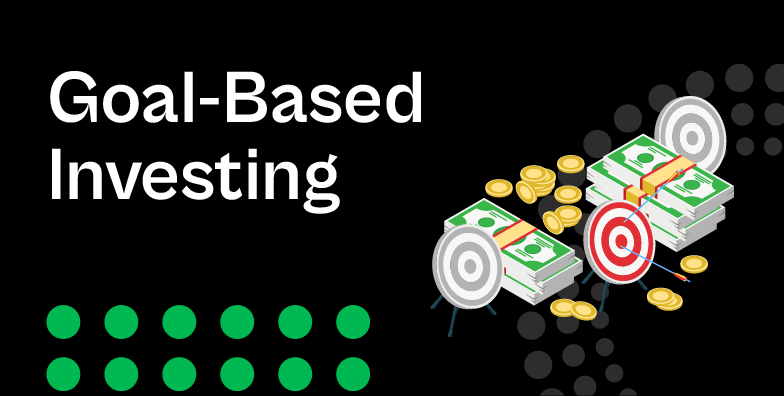Investing $100,000 is a significant financial milestone that opens up multiple opportunities to build wealth, generate passive income, and secure your financial future.
However, navigating the complexities of investing $100,000 can be challenging as the optimal strategy depends on individual risk tolerance, investment horizon, and financial objectives.
Nevertheless, this comprehensive guide will try its hardest to explain the best ways to invest 100k. We will provide insights into different asset classes and strategies to suit diverse financial goals with current market insights and expert recommendations.
Understanding Your Investment Objectives

Before diving into investment options, understanding your financial objectives is crucial. Are you seeking long-term capital appreciation, steady income, or a combination? Your risk tolerance, time horizon, and financial goals will influence your investment choices.
For instance, a younger investor with a longer time horizon might prioritise growth-oriented investments, while someone nearing retirement may focus on income-generating assets and capital preservation.
In addition, seeking professional financial advice can provide valuable guidance tailored to your circumstances. A certified financial planner or investment advisor can help you assess your financial goals, risk tolerance, and time horizon to develop a personalised investment strategy.
Ranking the Best Ways to Invest 100k

1) Diversifying with Stock Market Investments
The stock market offers a range of opportunities for investors looking to grow their wealth. Investing in individual stocks allows you to target companies you believe will perform well. However, this approach requires thorough research and carries higher risk due to potential volatility.
Alternatively, exchange-traded funds (ETFs) and mutual funds provide diversification by pooling investments across various sectors and companies. Index funds, which track market indices like the S&P 500, offer broad market exposure with lower fees, making them an attractive option for many investors.
Pros:
Potential for high returns over the long term
Wide variety of investment options (stocks, ETFs, index funds)
High liquidity – easy to buy and sell
Accessible for investors of all experience levels
You can automate with robo-advisors or retirement accounts
Cons:
Subject to volatility and market downturns
Requires research and monitoring for individual stocks
Emotional investing can lead to poor decisions
Short-term losses can occur even in strong markets
2) Exploring Real Estate Opportunities
Real estate can be a powerful component of a diversified investment portfolio. Investing in rental properties can provide a steady income stream and potential appreciation over time. However, direct property ownership requires significant capital, management responsibilities, and exposure to market fluctuations.
For those seeking a more hands-off approach, real estate investment trusts (REITs) offer exposure to real estate markets without the need to manage properties directly. REITs are companies that own, operate, or finance income-producing real estate and are traded on major stock exchanges, providing liquidity and diversification.
Pros:
Potential for consistent rental income
Property values tend to appreciate over time
A tangible asset that can be leveraged
Tax benefits, including deductions and depreciation
REITs provide passive real estate exposure without ownership
Cons:
High upfront costs and potential debt
Time-consuming property management responsibilities
Market dependent – values can decline
Illiquid compared to stocks or bonds
Property maintenance and unexpected expenses
3) Allocating Funds to Bonds and Fixed-Income Securities
Bonds and other fixed-income securities can add stability to your investment portfolio. These investments typically offer regular interest payments and are considered lower risk than stocks. Government bonds, such as U.S. Treasuries, are backed by the federal government and are among the safest investments.
Corporate bonds issued by companies offer higher yields but come with increased risk. Municipal bonds issued by state and local governments may provide tax advantages, especially for investors in higher tax brackets.
Pros:
Steady, predictable income stream
Lower volatility compared to stocks
Diversifies a portfolio and balances risk
Government bonds are considered very safe
Some municipal bonds offer tax-free interest
Cons:
Lower returns than equities over time
Susceptible to inflation and rising interest rates
Credit risk with corporate bonds
Market value can decline if rates rise
Not ideal for aggressive growth seekers
4) Considering Alternative Investments
Alternative investments encompass a broad range of assets outside traditional stocks and bonds, including commodities, private equity, hedge funds, and cryptocurrencies. These investments can offer diversification benefits and the potential for higher returns but often come with increased risk and complexity.
For instance, investing in commodities like gold can hedge against inflation, while private equity investments may provide access to high-growth companies not on public markets. Cryptocurrencies have gained popularity for their potential high returns but are highly volatile and speculative. It's essential to thoroughly research and understand these investments before allocating significant capital.
Pros:
Potential for very high returns
Diversifies portfolio beyond traditional assets
Can act as a hedge against inflation (e.g., gold)
Access to innovative and emerging sectors
Some options have a low correlation with stock markets
Cons:
High risk and volatility, especially with crypto
Often lack transparency and regulation
They may require long holding periods
Low liquidity in some cases (e.g., private equity)
Complex and not suitable for all investors
5) Maximising Tax-Advantaged Accounts
Utilising tax-advantaged retirement accounts can enhance your investment strategy by providing tax benefits and encouraging long-term savings. Contributing to 401(k)s and Individual Retirement Accounts (IRAs) can reduce your taxable income and allow your investments to grow tax-deferred or tax-free, depending on the account type.
In 2025, the contribution limits for 401(k) plans are $23,500, with additional catch-up contributions allowed for individuals aged 50 and over. IRAs have a contribution limit of $7,000, with an extra $1,000 catch-up contribution for those aged 50 and above. Maximising these contributions can significantly impact your retirement savings over time.
Pros:
Tax benefits (deferred or tax-free growth)
Encourages long-term savings discipline
Compound interest boosts long-term returns
Employer matching boosts value in 401(k)s
Widely accessible and easy to set up
Cons:
Contribution limits restrict how much you can invest
Early withdrawal penalties before retirement age
Limited investment choices in some plans
RMDs (Required Minimum Distributions) for traditional accounts
Lack of immediate access to funds
6) Building an Emergency Fund
Before investing, it's prudent to establish an emergency fund to cover unexpected expenses or financial setbacks. Financial experts typically recommend setting aside three to six months' worth of living expenses in a liquid, easily accessible account, such as a high-yield savings account.
This fund is a financial safety net, allowing you to avoid tapping into your investments during emergencies and providing peace of mind.
Pros:
Financial safety net for unexpected expenses
Reduces the need to liquidate investments in a crisis
Provides peace of mind and stability
Easily accessible in high-yield savings accounts
Cons:
Minimal returns due to low interest rates
The opportunity cost of not investing the money
Inflation can slowly erode value over time
7) Implementing Dollar-Cost Averaging
Dollar-cost averaging is an investment strategy where you invest a fixed amount of money at regular intervals, regardless of market conditions. This approach can reduce the impact of market volatility and lower the average cost of your investments over time.
By consistently investing, you buy more shares when prices are low and fewer when prices are high, potentially enhancing long-term returns and minimising the risk of investing a large sum at an inopportune time.
Pros:
Reduces the impact of market volatility
Encourages consistent investing behaviour
Avoids emotional decision-making
It can lead to a lower average purchase price
Ideal for long-term investors
Cons:
May miss out on gains if the market rises rapidly
It does not guarantee profit or protect against loss
It can lead to underperformance compared to lump-sum investing in bull markets
Requires ongoing contributions and discipline
Conclusion
In conclusion, investing 100k offers a significant opportunity to build wealth and achieve financial goals. However, it requires a balanced approach in considering various asset classes and individual financial circumstances.
Lastly, remember to review and adjust your investment plan regularly to align with your financial goals and changing market conditions.
Disclaimer: This material is for general information purposes only and is not intended as (and should not be considered to be) financial, investment or other advice on which reliance should be placed. No opinion given in the material constitutes a recommendation by EBC or the author that any particular investment, security, transaction or investment strategy is suitable for any specific person.








